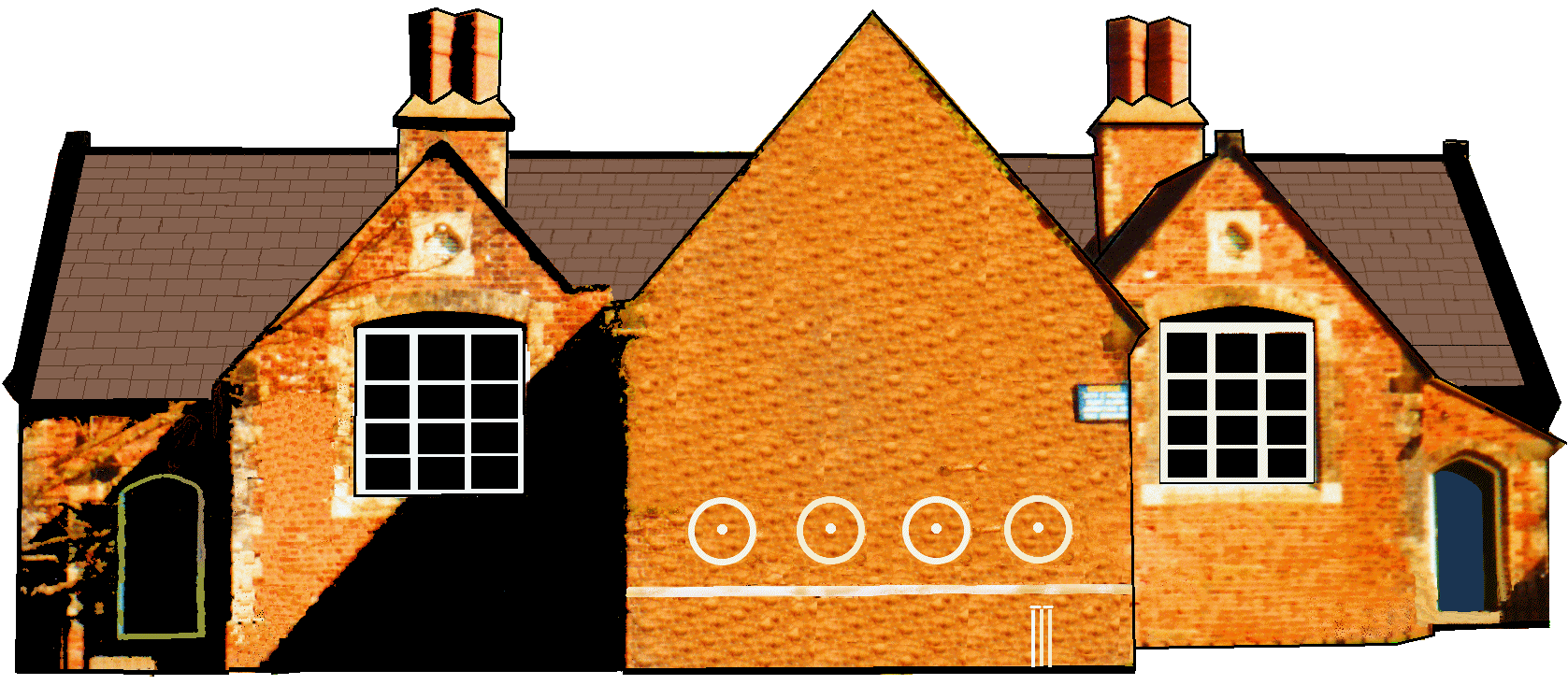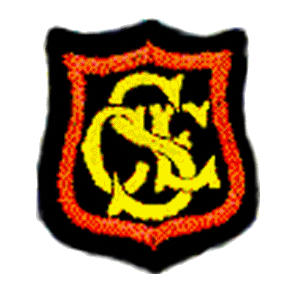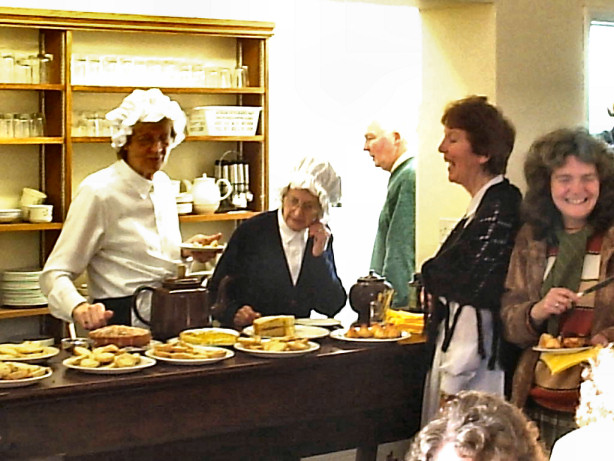The
Old School was founded as a National School in 1849,
though not in the building we see today. This was a time
when there was a great deal of new school building all
around the country, both Sunday and Day Schools.
From other local history records, we learn that the
earliest what we would call a 'Church of England School'
was located in the curved corner building that later
became Holme's abattoir on Lowgate! Ten years later,
in 1859, the land of the present site was donated by the
Broadley family for a new school, and this is the building
we are lucky to still have today. We've recently
learnt that the Act of Parliament that enabled this new
school, on land donated for free, stipulated that the
government would pay half, which we now know to have been
£300, and the Church of England would pay half. So
our Old School was built for £600. To all outward
appearances, it is largely unchanged, except perhaps for
the flagpole and a grassed-over playground. A really
observant visitor would notice that the two wings were
later joined together when the recess was filled in by a
new classroom, and this is now our tearoom.
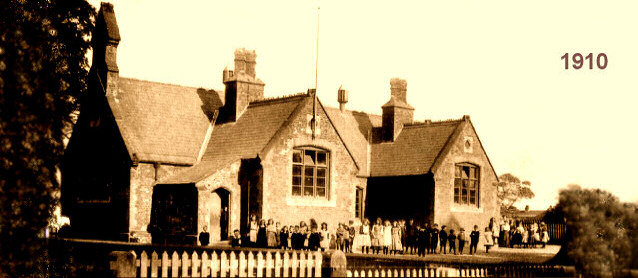 Now the St James' Church of England School, it thrived in this building during the rest of Queen Victoria's reign and into the 20th century. The very first days of the Great War saw a battalion of soldiers come to the village for billeting before being quickly sent to France. Many were billeted inside the school, and we believe it may also have been used for a short time as the battalion HQ of a huge tented encampment in the grounds to the rear and right down the gentle grassy slope onto the lower ground. Our understanding is that it was one of the two service battalions of the East Yorkshire Regiment who came here first, around a thousand men in all. The school was closed to pupils, and classes moved out to rooms in private houses for around a month or so before returning. The late twenties saw the school pass from county council control to Hull City Council when the city's boundaries were extended to take in the whole of Sutton parish. Similarly, during the first days of the Second World War, the military were here again for quite a few weeks until other more permanent arrangements could be made. Again, the school closed, but because the declaration of war was right at the end of the school holidays, there is no immediate reference to the war in the school log. This time, they were out for a good couple of months, the log showing a return to normal school classes in November of 1939 just as a basic matter-of-fact, no explanation, no drama. We believe many hundreds of soldiers passed through these gates at various times during both wars, and in 2014, we placed a memorial stone inside the school to those that never returned, as well as those who also served.  The
school continued with the building owned by the church, but
with most educational aspects under local education
committee control. The authority maintained the building and
grounds, and employed the teachers, though the church had
oversight and a great deal of influence over the appointment
of the headmaster and the teachers via a board of governors.
The council provided all necessary equipment, as it did for
state-owned schools. The arrangement continued until it was
deemed that the building was too small for modern
requirements. The school leaving age increased after the
war, but Sutton was still an 'all-age' school, for children
from infants at five years old, to school-leaving age at
fifteen years. As such, it had long been overdue for
replacement, even from the 1940s, but it was not until a
replacement St James' School was built in the mid-1970s on
the nearby Bransholme estate, that, in 1977, this Sutton
village school finally closed to pupils. The
school continued with the building owned by the church, but
with most educational aspects under local education
committee control. The authority maintained the building and
grounds, and employed the teachers, though the church had
oversight and a great deal of influence over the appointment
of the headmaster and the teachers via a board of governors.
The council provided all necessary equipment, as it did for
state-owned schools. The arrangement continued until it was
deemed that the building was too small for modern
requirements. The school leaving age increased after the
war, but Sutton was still an 'all-age' school, for children
from infants at five years old, to school-leaving age at
fifteen years. As such, it had long been overdue for
replacement, even from the 1940s, but it was not until a
replacement St James' School was built in the mid-1970s on
the nearby Bransholme estate, that, in 1977, this Sutton
village school finally closed to pupils.As the building itself was now deemed to be surplus to requirements, there had been a (misinformed )council plan to demolish the old school and clear the site, initially to make a car park! The school had been run by the council, but they didn't own it, the church did. This destruction was prevented on the very day demolition was due to commence by the quick thinking and determined action of the wife of the rector of St James' at the time. Both the Reverend Terry Doherty and his wife Deanna, also an ordained priest, between them saved the day, and for a long time, the old village school was used as a temporary store. In the late 1990s, it was decided that the old building could once again be put to some educational use, now as a church education centre, and so the old school was saved yet again. No one can seem to put their finger on an exact date for this, but it was around 1998 that the current museum really came into being. A former teacher herself, Merrill Rhodes, whose own children had attended this school but who herself had worked at other Hull schools, was employed by the church as a schools liaison officer, working with more than two dozen local schools in the Hull local authority area. Merrill began to collect records and artefacts, at first those specifically connected with the school, to take with her when she did the rounds and gave talks to schools. Hence we have copies of the old school registers dating back to 1876, and the wonderfully rare 'school log', filled in every day by the head teacher of the time. When Merrill's collection became too large to keep at home, it was Deanna Doherty who suggested that use could be made of the end classroom of the Old School, provided someone else cleared it out of all the stored items from its school days. Because Merrill was employed by the church, she was also offered the use of the room to use as a rudimentary office, a base, for her work in visiting many Hull schools on a weekly basis. Original school desks, and the school bell, were some of the items found under all the stuff in that treasure trove. Moreover, Terry and Deanna then stumped up several thousand pounds of their own funds to have the kitchen fitted out and the extension classroom to be used as a tearoom. They also paid for a complete re-wire of the electrics, and for ladies and gents toilets to be installed in what had been the boys' changing room. Volunteers were recruited, and the building redecorated, again all at huge expense. It was decided then to open the 'exhibition room' on Fridays, just for 4 hours, as a village exhibition centre and also as a source of family history information. More and more folk brought items for the exhibition, and it quickly took on a life of its own. It did in fact become a museum by a fairly fast process of 'metamorphosis', though it was not termed as a museum for a very long while. It would stay as the Sutton Exhibition & Resources Centre for some 14 years before a change of website server necessitated the choice of a much shorter web name. So, the Sutton & Wawne Museum it became. Man early donations from Sutton, and later Wawne residents, were of photos, both of the villages, farms and their inhabitants over the decades, but those specifically of the pupils came from two main sources. What we know as the glass-slide photo collection of Eric Johnson, the last headmaster, came to light, and was donated by his daughters. As did the glass-slide collection of the Reverend Coleman, a predecessor of the Dohertys at St James' in the 1920s. It was Peter who arranged and printed off the dozens of what were very good quality photos, and Merrill catalogued and indexed them in her distinctive and stylish calligraphic hand. Both the Reverend Coleman and Mr Johnson were skilled photographers in their own right, processing and developing their own prints, and both men could easily have made their living in the photographic field. Thus a huge number of images of the village and its children became part of the earliest exhibitions. Merrill and Peter, with superb support from their earliest volunteers, raised funds to keep the place going by putting on 'lantern slide' shows of the old photos on Saturday afternoons, and talks and presentations similarly connected with all aspects of local and social history. The 'Victorian afternoons' were particularly successful, when Merrill's 'attendants' dressed up in costume wearing white smocks and mop caps bringing an old-worldly air of Victorian servitude to the place. One thing that did become abundantly clear as time went on, both from this increasing collection of school photos and the spoken memories of former pupils, was that this was very much a 'happy school'. The fun and laughter that existed alongside the learning is palpable, and a sense of that era exists still when the place is full of visitors enjoying our history. If one word captures the essence of most photos, it's 'joy', a word not often bandied about today. We try to bring something of that latent sense of joy back. As is the way with these things, word spread and ever more donations of more general artefacts connected with the village continued to come in, documenting in the main the domestic side of village life. Kitchen and cooking equipment, sewing and dressmaking items from thimbles to full sewing machines - all were quickly joined by garments and costumes of past decades, including wedding dresses and bridal apparel, and then by a much wider cross-section of items that could more widely be deemed as 'local social history.' Along with donations of medals from the families of former Sutton and Wawne servicemen and general memorabilia of both world wars, the collection of artefacts that our great-grandparents would have recognised very rapidly increased. It all came together in a very short space of time, two or three years or so. By the turn of the century, when Merrill published her millennial book outlining the history of Sutton, Bransholme and Wawne in 1999, the collections of photos, documents on the big houses and noted local families and businesses, made the museum room look pretty much as it appears today. The collection as a whole really was Merrill's inspiration, and it was never conceived that it could ever become a museum in the usually then accepted sense of the term, Merrill herself never liking the term, associated as it was back then with the older "don't touch" dusty displays of traditional museums down the decades. These exhibits were very much meant to be handled, examined, and touched where it was practicable. But in the fullness of time, and no one can quite put their finger on when, it did become what is in effect a Folk Museum in its own right - though it still retains its original concept of somewhere to come to research your local family history, or any local history for that matter. For a well as photos, what also was collected was family history, of local families. Notably at first, they were the histories of the families who owned, and sometimes built, the big houses. But quickly, the collection expanded to include anyone's Sutton and Wawne family history, whatever their work. So from 'Ag Lab' to Police Constable to Mill Owner, from Railwayman Porter to Cobbler to Local Butcher or Carter and Haulier, and everything in between, an almost invisible history of people was deposited on our shelves, and increasingly into the digital depths of computers and flash drives. Added to all that, of course, is also the collection of old school photos, class portraits, from the turn of the century right up to closure over 70 years later, a collection to die for, I might add! A committee was formed of the volunteers, headed by Merrill and her husband Peter, and what we see today slowly started to take shape. The building was redecorated by willing volunteers, retaining as many of the existing school features as possible. The Dohertys, original saviours of the building and now almost on the point of retiring from clerical duties, were still heavily involved in helping Merrill and Peter's fledgling committee. As we saw above, they had themselves contributed an enormous amount of their own funds to help the whole project along. The original school clock, for a long time hanging dormant on the wall, was restored to working order and once again marked the hours of the day. Only in more recent times was it revealed that this same clock originally came from the railway station platform. One classroom was converted to what is now our tearoom, though it also now doubles up as a workroom and exhibition space, and a fully fitted kitchen added next door with a serving counter between. School parties from all our local schools, but particularly the new St James' School, now just a few minutes short walk away, were invited to visit, and over the following years, such school visits have become increasingly regular and very welcome event of the building's annual life, several such visits per year in fact from all local schools. Indeed, our schools have helped enormously with fund-raising to help the museum thrive and continue to run from month to month. Given that it's on record that it was such a happy school, it is more than satisfying, indeed heartwarming, on these school visit days to hear these very rafters ringing again with the chatter and laughter of young children, and singing, as it did in years before. The new St James' School, now an academy, give us a small but very accomplished carol concert every Christmas, just before breaking for the holiday. The link between the new school, the church and this Old School, is still extremely strong and enduring. Of course, Sutton is not a village in isolation. Its history is very closely bound up with the nearby village of 'Waghen', here using its ancient spelling, and much more so than many other such neighbouring villages. Few may know that in the Middle Ages, Waghen and its church of St Peter was the senior village of the two, and was far more important in 1300 than Sutton. Merrill collected information on all the local farming families of old, many of which had intermarried with other farm families in the wider area, and in many respects, the records collected and research undertaken showed that this new 'heritage centre' owed much to a far wider historic area. We believe many links between families go back much further than most folks realise today - to well before current written records show. Most families are indeed fortunate to find documentary evidence, birth or baptism records, for much before the 1700s, but such links were surely already there way back to even before Tudor times, and indeed the Middle Ages and long before that. Hence the history of Stoneferry and Wawne is so closely intertwined with that of Sutton that it would be reflected in the fullness of time in the choice of the full name of the museum. Few people realise that until about the 1880s, when the 'new' parish church of St Mark's was opened, the original Sutton St James' parish extended along the river so far south it went as far as North Bridge and Witham, along that road's northern side, thence north back up Dansom Lane past and including what would become Reckitts. It was a huge parish, with Sutton itself at the far northern end. That explains why the 1881 census has so many births recorded as in Sutton parish, but were actually born in Stoneferry and the area around St Mark's, formerly known as 'The Groves'. A child born in the new terraced streets around Lime Street would be expected to be baptised at St James', in Sutton! From about 1999, the "Sutton Exhibition & Resources Centre" as it was known, has opened every Friday for four hours across lunchtime, 10.00am till 2.00pm, and very successful it has been too. As word spread, visitors came from far and wide, firstly perhaps to view the school of their ancestors, then to view the regular exhibitions. Some came in, or dropped by, because they saw the notice on the gate, offering a welcome cuppa, a biscuit and a chat about the old days. Some of the volunteers started to do basic family history research, and collections of census CDs and other family history records were acquired to use alongside the school registers. Researching and helping folks get started with family history soon became a big part of what we do. Indeed, a good number of our growing collection of photos of both villages came about from chance cups of tea, the word getting about that we were trying to conserve a little of Sutton and Wawne's disappearing history. So much so that in photos alone, we now have some thirty albums all archived and indexed by Merrill for visitors to browse through on Fridays. Our collection of maps has to be seen to be believed, once again, largely Merrill & Peter's work, within which I now realise was a good deal of expensive 'copying'. Maps in A3 size do not come cheap! The popularity of family history programmes on TV certainly helped to foster this growing hobby and also help to secure the immediate future of the building. For the first 15 or so years, the major financial support of the Old School for heating and lighting had been the Ann Watson Trust, a local financial body almost 300 years old that makes grants according to the bequests of Ann Watson's will. One of the criteria was support for educational establishments just such as The Old School and its work with today's generation of children in fostering an interest in history. The Old School went 'live' with its own web page in 2000, following the very first pages that documented the village's war dead listed on the war memorial. Both pages were allied to a new set of pages for St James' Church itself, where the museum and war memorial were just sub-pages. Researching wider history, where all three types of history - military, family and social history - now combine and are researched in equal proportions by volunteers every week for our constant stream of visitors and enquirers, some of whom come a very long way to see us indeed, sometimes from overseas! 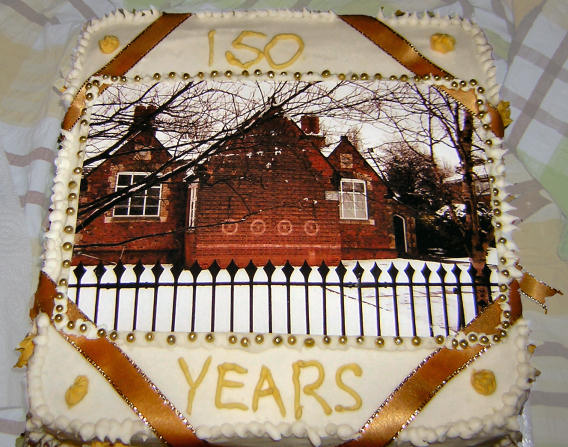 The "Friends of The Sutton & Wawne Museum" was formed in 2013 following what was seen as the potentially disastrous condemnation of the ancient boiler and heating system. The Old School needed to replace the heating system, and fast, before any major part failed. Had the old boiler given up the ghost that following winter, with no heating at all, the building would have had to close, not just as a museum and exhibition space, but also to the several other users that hire the school hall on a weekly basis. The building, and collections within, were in grave danger. The fact that we were able to stay open played no small part in raising the funds required; it was a close-run thing. So "Friends" was formed, and donations rapidly came in from many individual sources, as well as a couple of major grants. Support via local ward councillors enabled the city council to give us not only a financial boost towards the new heating, but also the recognition that comes with a visit by the Lord Mayor, Councillor Mary Glew, in January of 2015. The decision was made to fully convert to electrical heating via time-clock controlled oil-filled radiators of a German design. Along with all the donations, many raffles, sales and proceeds from exhibition events and Heritage Days all swelled the coffers required to save the day, and the new system was installed and working by the winter of the following year, 2014. We are about to embark on a new era in our museum. From 2016, we have to be totally self-funding for all our maintenance costs and lighting and heating bills. We have a good deal of work ahead in order to secure what the Doherty's saved, and Merrill and Peter subsequently built upon, and to ensure the Old School survives into future decades to tell the story of a way of life fast fading from memory. And it is not just memories that are fading away. Some of our earliest and staunchest volunteers are sadly no longer with us, and we desperately need more volunteers to take us into the future. So although we are still proud to embrace the fact that we are a 'Free Museum', we also welcome donations and support from wherever we can find it to further our endeavour. We hope, as a family history research centre, we give value for money when visitors make donations to enable us to carry on printing photo copies for them from our huge collections of photos of their ancestors and relatives, as well as village scenes.  And of course, we welcome
visitors just to look, and hopefully remember, how things
used to be in village schools and village life such as ours
up and down the land. Over and above all that, we also hope
we inspire today's young people in fostering a strong sense
of our history and how that is inevitably connected to their
own family history as they discover it. And of course, we welcome
visitors just to look, and hopefully remember, how things
used to be in village schools and village life such as ours
up and down the land. Over and above all that, we also hope
we inspire today's young people in fostering a strong sense
of our history and how that is inevitably connected to their
own family history as they discover it.All eras of history are rich and in Britain we are particularly rich. We hope that The Old School, and the Sutton & Wawne Museum within it, with all that we do, enhances our local richness. We are proud to term ourselves a 'Folk Museum', and just as proud of the fact that it is the folk of Sutton & Wawne whose story we tell, both those folk of yesteryear as well as of today. Moreover, more than anything else, we hope you feel that this building, this venerable 'Old School', is yours, wherever in the wider Sutton and Wawne parishes you or your forebears came from, whether they or you came to this school or another, or whether you are a recent resident just learning about that we do. We would like you all to enjoy it, and make use of it, just as much as we do.
photo: Eric Johnson c.1969
a worthy
quote:
'In everything the old overlaps the new ; in religion, in thought, in family custom. There is never any clear cut; there is no single moment when all Englishmen adopt new ways of life and thought.'
G.M. Trevelyan 1942 |
|||||
